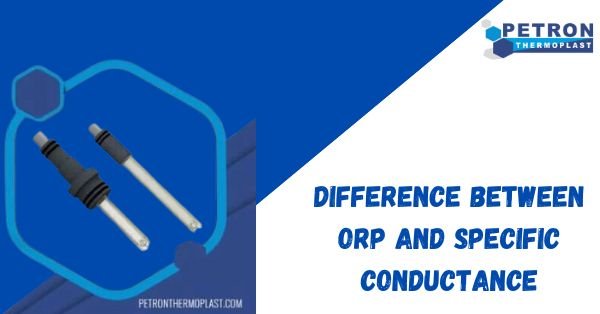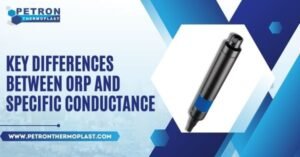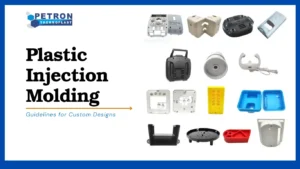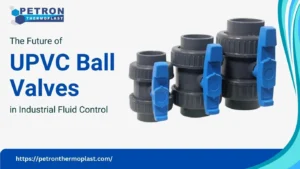Outline
- Introduction
- Brief explanation of ORP and specific conductance
- Importance of understanding the differences
- Understanding ORP (Oxidation-Reduction Potential)
- Definition and concept
- Measurement units and scales
- Applications of ORP
- Environmental monitoring
- Industrial processes
- Water treatment
- Understanding Specific Conductance
- Definition and concept
- Measurement units and scales
- Applications of Specific Conductance
- Quality assessment in water
- Industrial applications
- Relationship with salinity
- Key Differences Between ORP and Specific Conductance
- Core concepts differentiation
- Measurement variations
- Real-world applications contrast
- Importance in Different Industries
- Environmental science
- Chemistry and manufacturing
- Water treatment and quality control
- How ORP and Specific Conductance Interact
- Influencing factors
- Synergies in certain applications
- Case Studies
- Real-world examples illustrating differences
- Impacts on decision-making processes
- Challenges and Limitations
- Factors affecting accuracy
- Overcoming potential issues
- Future Trends in ORP and Specific Conductance Technologies
- Technological advancements
- Emerging applications
- Choosing the Right Measurement for Your Needs
- Considerations for selection
- Customized solutions
- Educational Outreach on ORP and Specific Conductance
- Importance in academic curricula
- Bridging knowledge gaps
- Conclusion
- Recap of key differences
- Emphasis on practical implications
- FAQs (Frequently Asked Questions)
- What is the significance of ORP in environmental monitoring?
- Can specific conductance be used as an indicator of water purity?
- How do ORP and specific conductance affect industrial processes?
- Are there any safety concerns related to high ORP levels?
- How can individuals measure specific conductance at home?
Introduction
In the realm of scientific measurements, two terms often surface—ORP and specific conductance. While both are integral to various industries, they serve distinct purposes and have unique characteristics.
Understanding ORP (Oxidation-Reduction Potential)
Definition and Concept
ORP, or Oxidation-Reduction Potential, is a measurement indicating the ability of a substance to oxidize or reduce another substance. It is a key parameter in electrochemical reactions.
Measurement Units and Scales
ORP is measured in millivolts (mV), and its scale ranges from negative to positive values. Negative values indicate a reducing environment, while positive values signify an oxidizing environment.
Applications of ORP
ORP finds applications in diverse fields, including environmental monitoring, industrial processes, and water treatment. Its ability to assess the electron activity in a solution makes it invaluable in understanding redox reactions.
Understanding Specific Conductance
Definition and Concept
Specific conductance, on the other hand, measures a solution’s ability to conduct an electric current. It is a reflection of the presence of ions in the solution.
Measurement Units and Scales
Specific conductance is measured in Siemens per meter (S/m), and its scale varies with the concentration of ions in the solution. Higher specific conductance values indicate a greater concentration of ions.
Applications of Specific Conductance
Specific conductance is widely used for assessing water quality, especially in terms of salinity. It plays a crucial role in industrial processes where the conductivity of a solution directly impacts efficiency.
Key Differences Between ORP and Specific Conductance
Understanding the disparities between ORP and specific conductance is essential. While ORP deals with electron activity and redox reactions, specific conductance focuses on the conductivity of a solution based on ion concentration.
Core Concepts Differentiation
ORP is centered around electron activity, whereas specific conductance deals with the movement of ions in a solution.
Measurement Variations
ORP is measured in millivolts, showcasing the electron activity, while specific conductance is measured in Siemens per meter, reflecting ion concentration.
Real-World Applications Contrast
While ORP is crucial in understanding redox reactions, specific conductance is paramount in applications where the conductivity of a solution is critical.
Importance in Different Industries
Industries ranging from environmental science to manufacturing rely on both ORP and specific conductance for different purposes.
Environmental Science
ORP is vital in assessing the environmental impact of substances, especially in bodies of water. Specific conductance, on the other hand, helps gauge the salinity of water bodies, affecting aquatic life.
Chemistry and Manufacturing
In chemical processes, ORP aids in controlling reactions, ensuring desired outcomes. Specific conductance plays a role in optimizing manufacturing processes where the conductivity of solutions is a critical factor.
Water Treatment and Quality Control
Both parameters are crucial in water treatment plants. ORP helps in determining the effectiveness of disinfection processes, while specific conductance assists in ensuring the purity of water.
How ORP and Specific Conductance Interact
The interaction between ORP and specific conductance is noteworthy, especially in applications where both parameters come into play.
Influencing Factors
Various factors, including temperature and solution composition, can influence both ORP and specific conductance readings.
Synergies in Certain Applications
There are instances where ORP and specific conductance work hand in hand. For example, in certain water treatment processes, both parameters may be monitored to ensure comprehensive quality control.
Case Studies
Examining real-world examples helps in illustrating the practical differences between ORP and specific conductance.
Real-World Examples Illustrating Differences
Case studies from different industries showcase scenarios where the choice between ORP and specific conductance is pivotal.
Impacts on Decision-Making Processes
Understanding the outcomes and impacts of decisions based on these measurements is essential for professionals in relevant fields.
Challenges and Limitations
Despite their significance, both ORP and specific conductance come with challenges and limitations.
Factors Affecting Accuracy
External factors such as contamination and temperature variations can impact the accuracy of readings for both parameters.
Overcoming Potential Issues
Developing strategies to overcome challenges ensures the reliability of measurements in diverse environments.
Future Trends in ORP and Specific Conductance Technologies
As technology advances, new trends emerge in the measurement and application of ORP and specific conductance.
Technological Advancements
Innovations in sensor technologies and data analysis methods are shaping the future of ORP and specific conductance measurements.
Emerging Applications
New applications continue to surface, expanding the role of ORP and specific conductance in various industries.
Choosing the Right Measurement for Your Needs
Selecting between ORP and specific conductance requires careful consideration of specific requirements.
Considerations for Selection
Understanding the nature of the application and the desired information helps in choosing the most appropriate measurement.
Customized Solutions
In some cases, a combination of ORP and specific conductance measurements may provide a more comprehensive understanding of the system.
Educational Outreach on ORP and Specific Conductance
Bridging knowledge gaps and promoting understanding of these parameters is vital for educational institutions.
Importance in Academic Curricula
Including ORP and specific conductance in academic curricula enhances students’ understanding of these fundamental concepts.
Bridging Knowledge Gaps
Educational outreach programs can contribute to bridging knowledge gaps and fostering a better understanding of these parameters.
Exploring ORP and Specific Conductance for Everyday Understanding
Now that we’ve delved into the technicalities of ORP and specific conductance, let’s break it down for everyday understanding.
Decoding the Mystery: ORP in Layman’s Terms
What is ORP?
ORP is like the mood ring of chemistry. It tells us if a substance is feeling a bit “oxidizing” or “reducing.” Think of it as a chemical emotion, swinging between positive and negative values, indicating its willingness to gain or lose electrons.
Real-world Analogy: A Tug of War
Picture electrons as participants in a tug of war. A positive ORP means one team is winning, signifying an oxidizing environment. Conversely, a negative ORP suggests the other team is in control, representing a reducing environment.
Specific Conductance: The Electrical Symphony
What is Specific Conductance?
Imagine specific conductance as the orchestra of ions conducting an electric symphony. It measures how well the ions in a solution can pass along an electric current, much like the musicians in an orchestra creating a harmonious flow.
Real-world Analogy: The Orchestra’s Harmony
In this analogy, ions are like musicians. The more skilled and numerous they are, the higher the specific conductance. It’s like the difference between a small ensemble and a full orchestra—the more players, the greater the conductivity.
Diving Deeper into the Kitchen Chemistry
Kitchen Example: Lemonade Stand Science
Let’s apply these concepts to a lemonade stand. The ORP of freshly squeezed lemon juice could be negative, as it’s rich in reducing agents (antioxidants). On the other hand, the specific conductance might increase as more sugar (ions) dissolves, enhancing the electrical conductivity of the lemonade.
Choosing Between ORP and Specific Conductance in Daily Life
Practical Decision-Making: Gardening Edition
Suppose you’re an avid gardener. Knowing the ORP of your soil can guide you in understanding its oxidative or reducing nature. Meanwhile, specific conductance can help you monitor the overall ion concentration, ensuring optimal nutrient levels for your plants.
Demystifying for Home Use: How to Make Sense of Readings
Home Experiment: DIY Water Testing
If you’re curious about your tap water, consider a simple experiment. Use an ORP meter to gauge its redox potential and a conductivity meter for specific conductance. It’s a hands-on way to see the principles in action without a chemistry lab.
Unlocking the Future: Innovations and Beyond
As we step into the future, the world of ORP and specific conductance is poised for remarkable advancements.
Smart Sensors and Connectivity
The Rise of Smart Measurements
Imagine sensors that not only measure ORP and specific conductance but also communicate seamlessly with other devices. Smart technologies are paving the way for interconnected systems, providing real-time data and insights.
Environmental Monitoring on the Go
Portable Solutions for the Modern Explorer
With advancements in miniaturization, portable devices for measuring ORP and specific conductance are becoming more accessible. Whether you’re a scientist in the field or a nature enthusiast, these tools empower you to monitor environmental conditions on the go.
Conclusion: Navigating the Waters of Chemical Understanding
In conclusion, the difference between ORP and specific conductance may seem intricate at first, but in everyday terms, they are like the yin and yang of chemical analysis.
Understanding their nuances unlocks a world of possibilities, from managing your garden’s soil health to ensuring your homemade lemonade is perfectly balanced. As technology propels us forward, these measurements become not just tools but gateways to a deeper comprehension of our environment.
So, whether you’re a scientist exploring the depths of redox reactions or a curious homeowner testing the conductivity of your pool water, the realms of ORP and specific conductance are yours to navigate.
FAQs (Frequently Asked Questions)
- What is the significance of ORP in environmental monitoring?
- ORP is crucial in assessing the environmental impact of substances, especially in bodies of water. It helps understand the redox potential and the overall health of aquatic ecosystems.
- Can specific conductance be used as an indicator of water purity?
- Yes, specific conductance is often used as an indicator of water purity, especially in terms of assessing the concentration of ions and salinity levels.
- How do ORP and specific conductance affect industrial processes?
- ORP is essential for controlling chemical reactions, while specific conductance is critical in optimizing manufacturing processes where conductivity is a key factor.
- Are there any safety concerns related to high ORP levels?
- High ORP levels may indicate the presence of strong oxidizing agents, which can pose safety concerns. Monitoring and controlling ORP levels are essential in industrial settings.
- How can individuals measure specific conductance at home?
- While specialized equipment is typically required for accurate measurements, individuals can use conductivity meters designed for home use to get a general idea of specific conductance in water.
You May Also Like : PEEK Machined Parts| Custom Plastic Injection Molding | Chemical Tanks | What is CNC Turning






